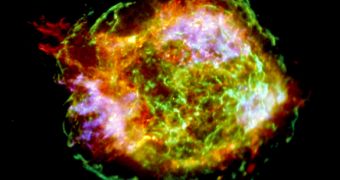Nickel 56 is one of nickel's unstable isotopes which is not occurring naturally here on Earth. However, it is formed during the supernova explosion at the end of a star's life. Physicists from the IPN Orsay and the GANIL claim they have been able to compress the nucleus of Nickel 56 for the first time, in order to study how stars behave right when they are compressed, before the supernova explosion occurs. By doing so, researchers have also created a way through which exotic nuclei can be created and studied, not having been available on Earth until now.
Physicists have a great deal to learn by studying the compression of stable nuclei, especially while trying to obtain information related to the properties of dense matter and nuclear matter in particular. The traditional way to compress stable nuclei is by smashing them with light nuclei, but the problem is that unstable nuclei disintegrate relatively easily right after they are formed. In fact, they only exist in the beams of particles inside particle accelerators.
With the help of the Maya - gaseous target and detector - instrument housed by the GANIL facility, researchers succeeded in making direct measurements on a compressed exotic nuclei. For the first time, Nickel 56 was created, and the data collected revealed that the unstable nucleus experienced two excitation modes, namely giant monopole resonance and nucleus vibration.
Through the new technique of compressing unstable nuclei, several hundred exotic nuclei can now be created, possibility unavailable previously due to spontaneous radioactive decay. Alternatively, neutron-rich nuclei may be created in order to study nuclear matter and understand what really happens when stars are being compressed before the supernova explosion. Unstable nuclei may also improve our knowledge of neutron stars and how gravitation defeats all nuclear forces in order to compress nuclei against one another.

 14 DAY TRIAL //
14 DAY TRIAL //